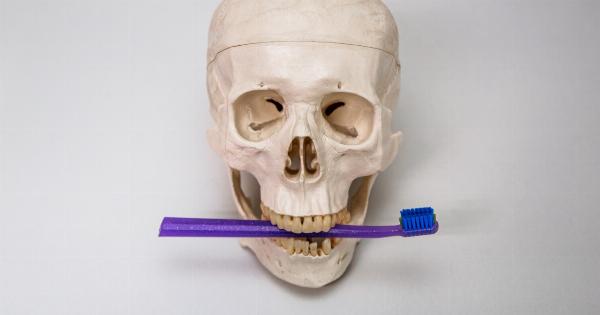Osteoporosis is a common skeletal disorder characterized by low bone mass and deterioration of bone tissue, leading to increased bone fragility and susceptibility to fractures.
It affects millions of people worldwide, predominantly women after menopause and the elderly.
However, exciting new developments in the fight against osteoporosis have emerged in recent years, offering hope for better prevention, diagnosis, and treatment of this debilitating disease.
1. Genetic Insights
One of the recent breakthroughs in osteoporosis research is the discovery of various genetic factors associated with the disease.
This includes identifying specific genes and their variants that influence bone mineral density, bone turnover, and other important factors related to bone health. Such genetic insights provide valuable clues for understanding the underlying mechanisms of osteoporosis and developing targeted therapies.
2. Advanced Imaging Techniques
State-of-the-art imaging techniques have revolutionized the field of osteoporosis diagnosis and monitoring.
Dual-energy X-ray absorptiometry (DXA) remains the gold standard for measuring bone mineral density, but newer imaging modalities like high-resolution peripheral quantitative computed tomography (HR-pQCT) and magnetic resonance imaging (MRI) offer more detailed information about bone microarchitecture. These advanced imaging techniques enable accurate assessment of bone quality, aiding in early detection and treatment planning.
3. Novel Biomarkers
Biomarkers play a crucial role in early detection, monitoring disease progression, and assessing response to therapy.
Traditional biomarkers like bone turnover markers have limitations, but recent research has identified new potential biomarkers for osteoporosis. These include microRNAs, circulating osteoblast-derived exosomes, and specific proteins involved in bone remodeling.
The development of reliable biomarkers will enhance diagnostic accuracy, predict fracture risk, and guide personalized treatment strategies.
4. Targeted Therapies
The emergence of targeted therapies has significantly expanded the treatment options for osteoporosis. Bisphosphonates, such as alendronate and zoledronic acid, remain commonly prescribed medications to reduce bone loss.
However, novel antiresorptive agents, such as denosumab, a monoclonal antibody targeting the receptor activator of nuclear factor-kappa B ligand (RANKL), have shown promising results in preventing fractures. Additionally, anabolic agents like teriparatide and romosozumab, which stimulate bone formation, offer alternatives for severe osteoporosis cases.
5. Nutritional Strategies
Optimal nutrition plays a fundamental role in maintaining bone health. While calcium and vitamin D have long been recognized as essential nutrients, recent research has shed light on the importance of other vitamins and minerals.
Vitamin K, magnesium, and omega-3 fatty acids have shown potential in reducing fracture risk and improving bone density. A balanced diet rich in these nutrients, combined with adequate physical activity, can help prevent and manage osteoporosis.
6. Exercise Protocols
Exercise is key to maintaining bone strength and reducing the risk of osteoporotic fractures. New developments in exercise protocols have enhanced the effectiveness of physical activity interventions for individuals at risk of osteoporosis.
High-impact exercises, resistance training, and specific balance exercises have been shown to improve bone density, muscle strength, and overall physical function. Moreover, emerging technologies like virtual reality and exergaming provide innovative platforms for engaging in enjoyable and impactful exercise routines.
7. Telemedicine and Remote Monitoring
The COVID-19 pandemic has accelerated the adoption of telemedicine and remote monitoring in healthcare, including osteoporosis management.
Remote consultations, virtual fracture risk assessments, and at-home monitoring devices offer convenient and accessible options for patients to receive timely care and guidance. Telemedicine reduces barriers to healthcare access, especially for individuals residing in remote areas or with limited mobility, promoting better management of osteoporosis.
8. Tissue Engineering and Regeneration
Tissue engineering and regenerative medicine hold immense potential in the treatment of osteoporosis-induced bone loss. Novel approaches involve the use of stem cells, growth factors, and scaffolds to stimulate bone regeneration.
Advanced techniques like 3D bioprinting offer precision in creating scaffolds that mimic the native bone microenvironment. These innovative strategies aim to restore bone structure and function, providing a paradigm shift in osteoporosis management.
9. Patient Education and Empowerment
Increasing awareness and empowering patients are crucial aspects of osteoporosis management.
Accessible educational resources, support groups, and patient-centric initiatives help individuals understand the disease, adopt preventive measures, and adhere to treatment strategies. The inclusion of patient perspectives in research and healthcare decision-making ensures that interventions align with the needs and preferences of those living with osteoporosis.
10. Collaborative Research Efforts
Advancements in the fight against osteoporosis are possible due to collaborative research efforts involving multidisciplinary teams, including clinicians, researchers, engineers, and industry partners.
These collaborations foster the exchange of knowledge, integration of expertise, and translation of scientific discoveries into clinical practice. The synergy between different disciplines accelerates progress, leading to more effective strategies for osteoporosis prevention, diagnosis, and treatment.
Conclusion
The fight against osteoporosis has witnessed exciting developments across various fronts, from genetic discoveries and advanced imaging techniques to innovative therapies and patient-centered approaches.
These advancements offer new hope for preventing fractures, improving diagnosis, and enhancing the quality of life for individuals living with osteoporosis. Continued research and collaboration are pivotal in harnessing the potential of these developments and furthering our progress toward a future where osteoporosis is effectively managed and its impact minimized.































